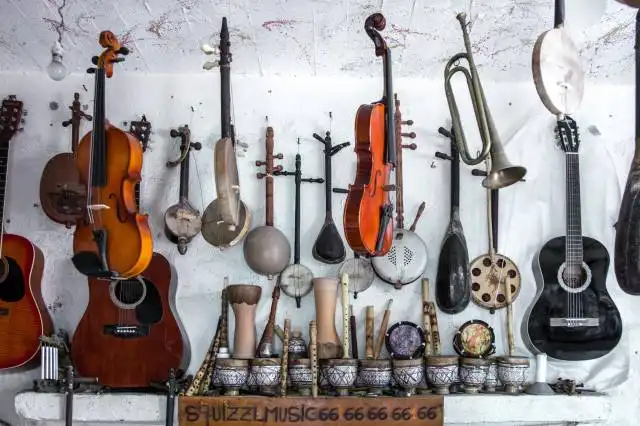Start a Vintage Toy Store
Turning Back the Hands of Time: Your Journey in the Vintage Toy Business
| Updated


VINTAGE TOY STORE
Unleash an avalanche of nostalgia with a Vintage Toy Store - a sanctuary where fond memories of yesteryears reside in the forms of treasured playthings! This business venture breathes new life into pre-loved toys, creating a haven that appeals to toy collectors, hobbyists, and those seeking a walk down memory lane. Transform your entrepreneurial journey into a fascinating playtime, exploring old-time classics from Matchbox cars to vintage Barbies. Your vintage toy store does more than sell toys, it trades in joyous remembrances and the gentle warmth of times gone by.
Jump to Business Plan
RELATED BUSINESS IDEAS
Browse ALL Retail & Shopping Business Ideas
Discover Your Perfect Domain
Unlock the door to your online success with our hand-picked selection of premium domain names. Whether you're starting a new venture or rebranding an existing one, the right domain can set the tone for your digital presence. Browse through our curated list, each with its unique potential to enhance your brand's visibility and credibility.
VINTAGE TOY STORE MINI BUSINESS PLAN
This a quick reality check to help you identify the strengths and weaknesses of your business concept before you dive in.
Sourcing Inventory
- Networking: Form connections at antique shows, flea markets, & auctions
- Online Platforms: Regularly browse eBay, Craigslist for rare finds
- Buy Low: Your goal is to buy toys for at least 25%-50% lower than their potential selling price
Marketing and Branding
- Social Media Marketing: Daily posts on Instagram, Facebook targeting vintage toy enthusiasts
- Email Marketing: Weekly newsletters featuring new arrivals & deals
- Online Presence: Maintain a professional website with a streamlined shopping experience
Store Operations
- Store Timing: Open at least 5 days a week, for 8 hours
- Staff: Employ 2-3 passionate & knowledgeable staff to help with store operations & customer service
Customer Base Growth
- Loyalty Program: Implement a loyalty program that rewards return customers
- Events: Organize toy fairs, collector meets, or themed days
These are broad estimates and can vary based on location, market demand, and the quality of your toys. Always seek professional financial advice before opening your business.
NOT WHAT YOU HAD IN MIND? Here are more ideas



Browse ALL Retail & Shopping Business Ideas
Grab Your Business Website Name
Before you get caught up in the whirlwind of setting up your business, invest in a domain name. It's a small but significant step that lays the foundation for your brand and makes it easier for customers to find and trust you. Just like you wouldn't build a house without securing the land first, don't build a business without securing your domain name.
"Why? Can't that wait?" Here's why it shouldn't
Step 1: Determine if the Business is Right Endeavor
The first step to starting a vintage toy store is to determine if it is the right endeavor. This includes researching the startup and ongoing expenses, as well as potential profits. It is important to understand the costs associated with the business before investing time and money.
Step 2: Name the Business
The second step to starting a vintage toy store is to name the business. This is an important step as it will be the face of the business. It should be creative and memorable. Tips on how to name the business will be discussed in this article.
Step 3: Ways to Make Money
The third step to starting a vintage toy store is to understand ways to make money. This includes researching the types of vintage toys that are popular and understanding the market. It is important to understand the market before investing in inventory. Examples on ways to make money will be discussed in this article.
Step 1: Determining if the Business is Right for You
Startup Expenses
Starting a vintage toy store requires a significant investment of both time and money. Before committing to the endeavor, it is important to understand the startup expenses associated with the business. These expenses can include the cost of renting a space, purchasing inventory, hiring staff, and obtaining any necessary permits or licenses. Additionally, you will need to factor in the cost of marketing and advertising, as well as any other costs associated with launching the business.
Ongoing Expenses
Once the business is up and running, there are ongoing expenses that must be taken into account. These expenses can include the cost of rent, utilities, payroll, and insurance. Additionally, you will need to factor in the cost of inventory replenishment, marketing and advertising, and any other costs associated with running the business.
Examples of Ways to Make Money
There are a variety of ways to make money in a vintage toy store. You can sell vintage toys, as well as new toys, and offer a variety of services such as repairs, appraisals, and consignment. Additionally, you can offer special events such as birthday parties and toy-making classes. You can also offer online sales, as well as wholesale and bulk discounts. Finally, you can offer gift cards and loyalty programs to encourage customers to return.
Step 2: Naming the Business
When naming a business, it is important to consider the type of business, the target audience, and the overall message you want to convey. For a vintage toy store, a name should evoke a sense of nostalgia and be memorable. It should also be easy to spell and pronounce. Additionally, it should be available as a domain name and social media handle.
When brainstorming name ideas, consider words that evoke a sense of nostalgia, such as “vintage”, “retro”, “classic”, or “antique”. Additionally, consider words that are associated with toys, such as “play”, “toys”, “games”, or “fun”. Combining these two types of words can create a unique and memorable name.
Once you’ve come up with a few name ideas, it’s important to check the availability of the domain name and social media handles. This will ensure that the name you choose is available and that you can create a cohesive online presence. Additionally, you should also check to make sure the name is not already trademarked.
Finally, it’s important to consider the potential for growth and expansion when choosing a name. While the name should be specific to your vintage toy store, it should also be broad enough to encompass any potential future endeavors. This will ensure that the name you choose is still relevant as your business grows and evolves.
Step 3: Obtaining Licenses and Permits
The third step in starting a vintage toy store is to research the local requirements for obtaining the necessary licenses and permits. Depending on the location, there may be different regulations and requirements that need to be met. It is important to research the local laws and regulations to ensure that the business is compliant. Additionally, it is important to research the local zoning laws to ensure that the business is allowed to operate in the desired location.
Applying for Licenses and Permits
Once the local requirements have been researched, the next step is to apply for the necessary licenses and permits. This process can vary depending on the location, but typically involves submitting an application and paying the necessary fees. It is important to ensure that all the paperwork is filled out correctly and that all the necessary documents are included. Additionally, it is important to make sure that all the fees are paid in a timely manner.
Maintaining Licenses and Permits
Once the licenses and permits have been obtained, it is important to maintain them. This involves keeping up with any changes in local laws and regulations and ensuring that the business remains compliant. Additionally, it is important to renew the licenses and permits when they expire. This will ensure that the business can continue to operate legally.
Step 4: Finding a Location
When looking for a location for a vintage toy store, there are several factors to consider. The most important factor is the size of the space. It should be large enough to accommodate the desired inventory, as well as any customers who may come in to browse. Additionally, the location should be easily accessible and have good visibility. It should also be in an area that is known for its vintage stores or antique shops, as this will help to draw in customers.
Leasing or Purchasing
The next factor to consider is whether to lease or purchase the space. If the business is just starting out, leasing may be the best option. This will allow the business to test the waters and see if the venture is successful before making a long-term commitment. If the business is successful and the owner wishes to stay in the same location for the long-term, then purchasing the space may be the best option.
Negotiating the Lease
When negotiating a lease, it is important to be aware of the terms and conditions of the agreement. The lease should include the length of the lease, the amount of rent, and any other fees associated with the space. Additionally, the owner should make sure to negotiate any additional services that may be included, such as utilities or maintenance.
Additional Costs
Finally, it is important to consider any additional costs associated with the space. This may include renovations, furniture, fixtures, and any other items that may be needed to make the space suitable for a vintage toy store. Additionally, the owner should consider any additional costs associated with running the business, such as insurance, taxes, and any other fees.
Step 5: Setting Up the Store
Designing the Layout
When setting up the store, it is important to create a layout that is inviting and easy to navigate. Consider the size of the store and the types of toys that will be sold. Think about how to create aisles and displays that will make it easy for customers to find what they need. Additionally, consider the overall aesthetic of the store. Choose colors and decorations that will create a pleasant atmosphere and make customers feel welcome.
Purchasing Necessary Equipment
When setting up the store, it is important to purchase the necessary equipment. This includes shelves, display cases, and other fixtures that will be used to display the toys. Additionally, consider purchasing a point of sale system, cash register, and other equipment that will be needed to run the store. Consider the cost of the equipment and make sure to stay within the budget. Additionally, consider the quality of the equipment and make sure to purchase items that will last.
Step 6: Finding Suppliers
Finding the right suppliers for a vintage toy store is essential to the success of the business. It is important to research potential suppliers thoroughly to ensure they are reliable and offer quality products. Start by searching online for vintage toy wholesalers and distributors. Look for reviews and ratings to get an idea of the quality of the products they offer. Also, consider asking other vintage toy store owners for recommendations. It is also important to consider the cost of the products, as well as the shipping costs, to make sure they are competitive.
Establishing Relationships
Once potential suppliers have been identified, it is important to establish relationships with them. This can be done by reaching out to them via email or phone. It is important to be professional and courteous when communicating with potential suppliers. Explain the business and what products are needed. Ask about the terms of the agreement, such as payment terms, minimum order requirements, and shipping costs. It is also important to negotiate for the best possible prices and terms.
Building a Network
Building a network of reliable suppliers is essential for a successful vintage toy store. It is important to have a variety of suppliers to ensure a steady supply of products. Consider attending trade shows and networking events to meet potential suppliers. Also, consider joining online forums and groups related to vintage toys to connect with other business owners and potential suppliers.
Negotiating Contracts
Once relationships have been established with potential suppliers, it is important to negotiate contracts. This should include the terms of the agreement, such as payment terms, minimum order requirements, and shipping costs. It is also important to make sure that the contracts are in writing and signed by both parties. This will ensure that both parties are held accountable for the terms of the agreement.
Step 7: Advertising and Marketing
Creating a website is a great way to advertise and market your vintage toy store. Not only can you list the items you have in stock, but you can also provide information about your store, such as your hours of operation, contact information, and any special events you may be hosting. You can also create an online store, where customers can purchase items directly from your website. Additionally, having a website will make it easier for customers to find your store, as they can simply type in your store name into a search engine.
Utilizing social media is another great way to advertise and market your vintage toy store. You can create accounts on various social media platforms, such as Facebook, Twitter, and Instagram, and post updates about your store. This can include photos of new items, upcoming events, and any special promotions you may be offering. Additionally, you can use social media to engage with customers and answer any questions they may have. This will help build relationships with customers and create a loyal customer base.
Step 8: Opening the Store
Before opening the store, it is important to make sure that all the necessary preparations have been made. This includes stocking the shelves with vintage toys, setting up the store layout, and making sure that the store is clean and inviting. It is also important to create a marketing plan to ensure that the grand opening is a success. This plan should include advertising in local newspapers, creating flyers, and setting up a website or social media page. Additionally, it is important to create a budget for the grand opening and to make sure that all necessary permits and licenses are in place.
Opening Day
On opening day, it is important to make sure that the store is ready to welcome customers. This includes making sure that the staff is trained and ready to assist customers, that the store is clean and organized, and that the store is properly stocked with vintage toys. Additionally, it is important to make sure that the store is properly staffed and that the staff is knowledgeable about the vintage toys that are being sold. On opening day, it is also important to make sure that the store is well-lit, inviting, and that the store is properly staffed. Finally, it is important to make sure that the store is properly advertised and that customers are aware of the store’s grand opening.
Step 9: Growing the Business
Once the vintage toy store is up and running, owners can look for ways to expand their business. One way to do this is to look for new products to add to the store. Owners should research what types of vintage toys are popular and in demand. They should also look for new suppliers who can provide them with the products they need. Additionally, owners should consider expanding their store to include other types of vintage items, such as clothing or furniture. This will help them to attract a larger customer base and increase their profits.
Advertising and Promotion
Advertising and promotion are important for any business, and vintage toy stores are no exception. Owners should look for ways to get the word out about their store. This can include setting up a website, creating social media accounts, and running ads in local newspapers and magazines. Additionally, owners should consider attending local events and conventions to promote their store and build relationships with customers.
Building a Customer Base
Building a customer base is essential for any business. Owners should look for ways to engage with their customers and build relationships. This can include offering discounts, hosting special events, and providing excellent customer service. Additionally, owners should look for ways to encourage repeat customers, such as loyalty programs or referral programs. This will help to ensure that customers keep coming back to the store.
EXPLORE MORE CATEGORIES
Browse ALL Business Idea Categories
TAKE THE NEXT STEPS










